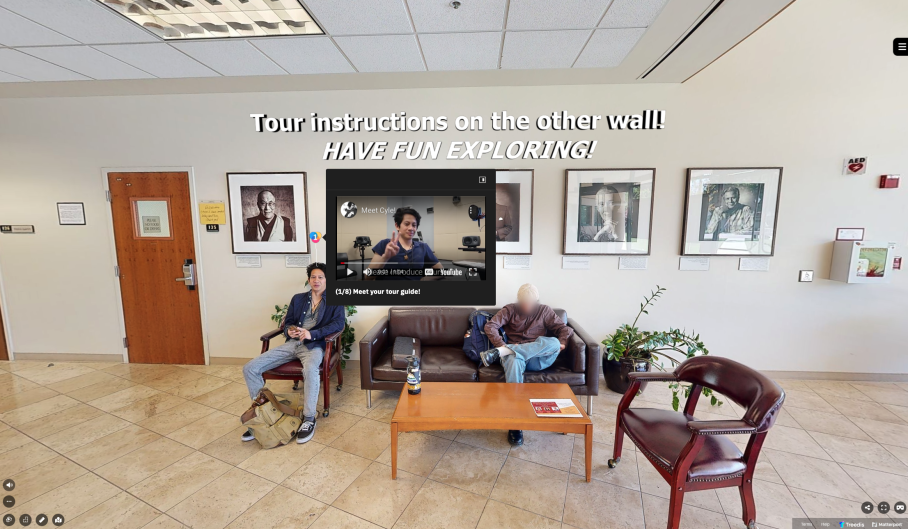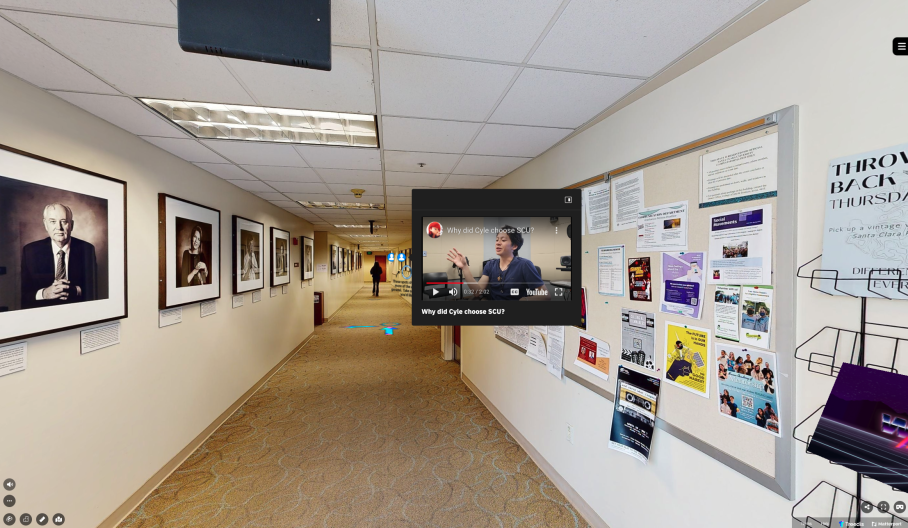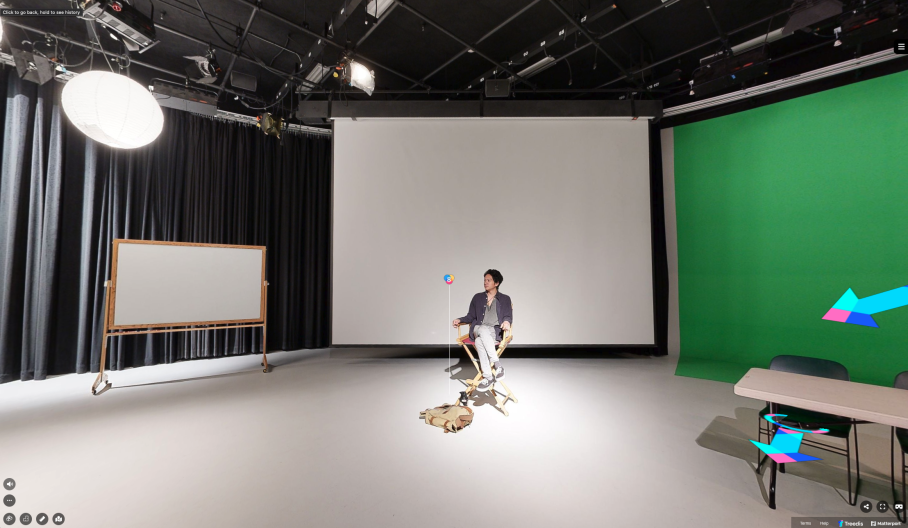Santa Clara University Virtually Showcases Its Campus With an Authentic Touring Experience
Matterport provides a more personalized and customizable tour option to bring the campus to life and highlight its offerings
Santa Clara University desired a different approach to campus tours than the generic, often impersonal experiences offered by many colleges across the country. They utilized Matterport digital twins to create an immersive 3D rendering of multiple school buildings so students from all walks of life and locations could access the campus in a new way.
With these scans in place, the university has built an inclusive and convenient touring experience for hundreds of aspiring learners.
Overview: What Challenges Santa Clara Needed To Solve
Established in 1851, Santa Clara University is a private Jesuit college located in Santa Clara, California. At the heart of Silicon Valley, the university challenges its students to discover new innovations with the use of technology and creativity.
The problem is, that people interested in the college can’t always physically visit campus due to economic or logistical limitations, leaving them to either make a decision without having all the necessary information or disregard the university as a feasible schooling option. For example, in the university’s master's program for computer science, at least 70% of the students are international, and the vast majority don’t have the chance to tour the college.
This is where virtual tours come in handy, although many colleges don’t use them as efficiently as possible.

Many existing university virtual tours provide people with helpful information and beneficial statistics, but don’t give a clear picture of what being a student actually looks like. This leaves potential students and their families with lots of details that can overwhelm them, rather than help them make an informed decision.
Santa Clara University needed a more personalized and customizable tour option to bring the campus to life and highlight what the school has to offer.
The Solution: How They Used Matterport Digital Twins
With its mission of leveraging cutting-edge technology to create user-friendly experiences in mind, the university set out to find a better way to showcase the campus.
The project team desired to make accessible experiences for students who couldn’t physically visit the college, ensuring the tours didn’t seem overly statistical or surface-level. The first tour the team created tells the story of Cyle, a film studies student and an aspiring screenwriter. Cyle narrates the virtual experience and points out spaces of importance for him, such as the green screen room for filming video, as visitors explore the campus.

Trisha Nguyen, one of the students who worked on this project — alongside assistant professor of computer science Kai Lukoff — utilized Matterport to develop virtual tours of several important areas on campus:
The first floor and film area of the communications building
Science building
Theater
Music building
The outside pass linking the music building and theater.
“We wanted to tell a more student-centered, relatable story about the day in the life of a student at our university so prospective students could really begin to picture themselves on campus,” Kai said.
This is especially important for people who may not think going into higher education is attainable, like first-generation students or those who are financially unable to visit the campus in person.
To accomplish this style of tour, Trisha and the other student leaders chose Matterport’s solutions. Kai was familiar with digital twins and previously used the smartphone-based app for personal projects. He shared his knowledge with the student team, who quickly upgraded to the Matterport Pro 3 camera to complete the building scans.
Because creating positive social change and providing equitable access to beneficial resources is so critical, Matterport helped optimize its performance as part of its social impact program. This helped the student team deliver the best possible tour for learners around the world and create a more accessible and inclusive experience for all students.

“It was a really smooth process, especially once we got the camera,” Trisha said. “Overall, the actual process of scanning was flexible and efficient, and it was nice to be able to see if the scan turned out right on the tablet while we were scanning.”
Trisha and the other students then used Matterport’s third-party partner Treedis to incorporate videos and design elements into the digital twins to deliver the immersive, interactive tours they knew potential learners were looking for. They could easily embed several types of media directly into the digital twin for viewers to enjoy.
Results: How Digital Twins Transformed the University of Santa Clara Touring Experience
The first three immersive tours of Santa Clara University have been beta-tested with local high school students to an enthusiastic response. The team plans to launch the tours to the wider public in the Spring of 2024 when prospective students must decide where to attend university. They are aiming for an audience of 23,000 unique students, including 50% underrepresented minorities and/or first-generation college students. With these virtual tours, the college can provide the same great experience for each and every person, whether they’re in California or anywhere else in the world.
Ultimately, the digital twins help prospective learners better visualize themselves at Santa Clara University, getting to step into the shoes of current students and follow along on an immersive and personalized walk through campus.
“When I was trying to decide what college I wanted to go to, I got to shadow a student at Santa Clara,” Trisha said. “For me, that was much more helpful to connecting to the university and deciding that I wanted to go here as opposed to the general tours I went on for most other schools, even in person. With my execution of the virtual tours, I wanted to try to recapture that experience of being able to follow students to see what they did and what life at the school truly looks like.”

The Future of Digital Twins at Santa Clara University
The university isn’t going to slow down its use of digital twins anytime soon. Since the student group created the initial three tours, a new team has taken over to continue this important work.
Additionally, the college plans to create other projects that show the day in the life of a learner where prospective students can wake up in a dorm room, walk to class, eat at the cafeteria, and even attend some classes.
Want to see the tour for yourself?
Discover the student-centered virtual tours the team at Santa Clara University created and see what types of positive change they’re creating for students on campus and around the world.
Access one of the Santa Clara University digital twins here. Are you interested in improving your patron, student, or staff experience with the use of a photorealistic, immersive 3D model? Contact our team today to learn how you can employ Matterport digital twins in your university or company. And check out our social impact page where you can learn more about the benefits digital twins can have on your community and organization.